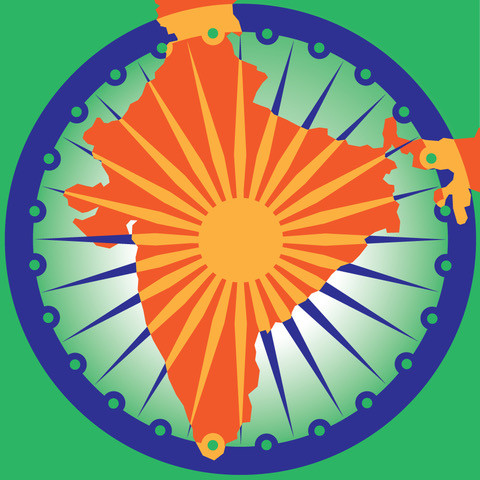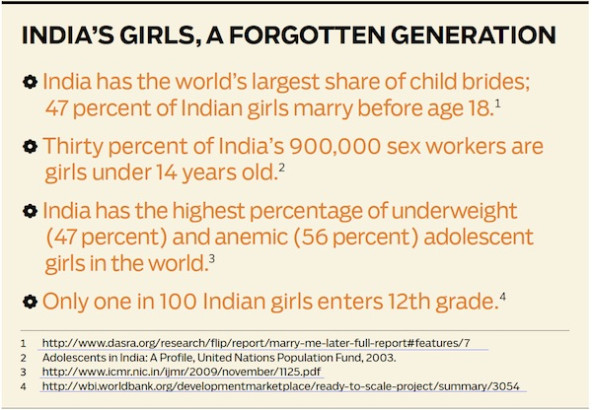
Lynne Smitham was en route to a Chennai slum where the nonprofit that she was volunteering with, Nalamdana, was performing street theater for the local kids. Weaving through a labyrinth of pedestrians, street vendors, cars, and the occasional buffalo, the old bus she was riding in ducked into a narrow alley piled high with rotting, putrid garbage. Hundreds of children soon emerged through the mess, hurriedly approaching the bus. This was the venue for the play, where more than 800 rag pickers assembled to watch Nalamdana enact the story of a soon-to-be child bride seeking freedom. At the end of the play the girl rose, literally and quite poetically, from a heap of dirt, triumphant in defying the oppressive, centuries-old practice.
So unshakable was the experience that Lynne returned home to the United Kingdom resolved to do more to improve the lives of girls from disadvantaged communities. A year later, in 2004, Lynne and her husband Peter created Kiawah Trust (KT), a foundation focused on empowering adolescent girls.
“We live in a world where most girls are denied an education, cannot choose whom and when to marry, when to have children, and how many,” says Lynne. “Every day, girls are sold, beaten, raped, traded, sacrificed, discarded, and discounted—just because they are girls. This is unacceptable.”
The KT model is research-led, outcome- and impact-oriented, and feedback-focused. The trust’s approach has been shaped by Lynne and Peter’s collective experience. Lynne, having spent decades in management and organizational development, brings a nuanced sensibility about people and organizations. Peter, in complement, brings investment knowhow from his three decades in private equity. He adds a global perspective on grantmaking from his 12 years on the board of Atlantic Philanthropies, the last four as chairman. (Atlantic Philanthropies was founded by Chuck Feeney and is among the world’s largest spend-down foundations, having made $7 billion in grants through 2014.)
In its early years, KT made grants directly supporting nonprofits across India. The Smithams took this approach because they wanted to stay close to on-the-ground issues, build independent relationships with grantees, and trace the impact of their support and guidance. They worked closely with London-based advisors New Philanthropy Capital, but during this phase they didn’t fully realize the benefits that a local Indian partner could bring.
As the couple continued supporting nonprofits, they focused on learning as much as possible about other ways their resources could make the most difference. They read extensively about girls’ issues; they commissioned two research reports on what it takes to empower girls, one from Copal Partners, a Delhi-based research firm, and one from Dasra, a strategic philanthropy foundation in Mumbai. By 2010, this research, along with their experiences over the preceding six years, helped refine KT’s philanthropic focus to work exclusively to improve the lives of adolescent girls in India.

At the end of the research phase and after spending time visiting nonprofits in India, they realized that the scale and complexity of the issues facing India’s 120 million girls demanded a collective effort. They recognized that the right local partner might bring what they couldn’t: its networks, an understanding of the social and political landscape, and knowledge about how to make effective grants in India.
For the Smithams, that partnership came in the form of the Dasra Girl Alliance (DGA), a $14 million initiative created in partnership with the US Agency for International Development (USAID) and Piramal Foundation, both respected organizations in the development sector. Launched in 2013, DGA aims to build a movement to empower India’s girls by galvanizing funding, building institutional capacity, and helping forge partnerships for organizations working with girls. Over the last two years, DGA has helped to build the capacity of organizations that improve girls’ lives, which collectively deploy $20 million annually and serve 4.7 million people.
“The collaboration between a nonprofit, a government aid agency, a family foundation, and a corporate [foundation] brings together complementary skills and diverse experiences to achieve a common goal; it demonstrates a modern approach to solving the issues faced by disadvantaged communities, of which India’s adolescent girls are a stark example,” says Peter. For every $1 that DGA has spent, it has driven $8 to the sector. Leveraged funding—getting more collectively than you put in individually —has transformed the Smithams’ thinking about the importance of coalitions and the impact they can have.
As Lynne says, “every girl who is educated, healthy, and empowered becomes the catalyst for change for her family, her community, and her nation.”
Support SSIR’s coverage of cross-sector solutions to global challenges.
Help us further the reach of innovative ideas. Donate today.
Read more stories by Rachita Vora.

